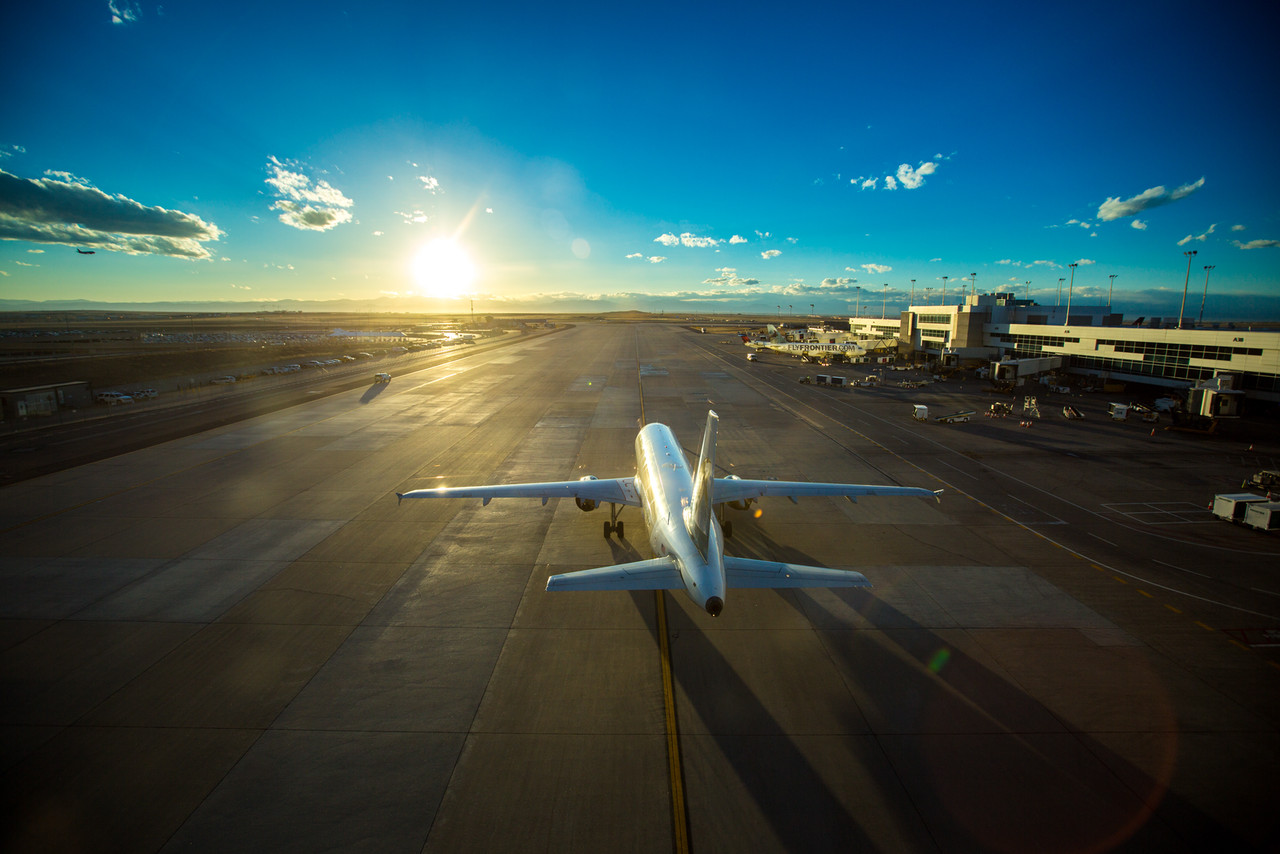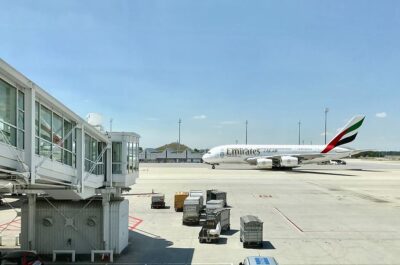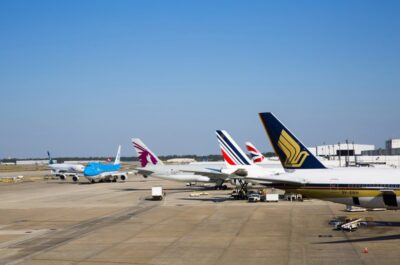Heavily subsidized Chinese airlines are gaining market share and driving US carriers out of markets.
For the last four years, US government officials have been politically muscled by Delta Air Lines, American Airlines and United Airlines (Big Three) into focusing exclusively on state-owned airline competitors from the United Arab Emirates and Qatar. Both the Obama and Trump Administrations have spent thousands of hours evaluating the Big Three’s unsupported allegations against Emirates Airline, Etihad Airways and Qatar Airways (Gulf Carriers).
At the same time, the Big Three, as well as US Government officials, have totally ignored the glut of subsidy-fueled capacity Chinese carriers are dumping into the US-China market at cutthroat prices. American Airlines, the largest airline in the world, recently was humiliated as it waved the white flag of surrender abandoning flying from its Chicago O’Hare hub to Beijing and Shanghai. Why the retreat by American? Its CEO, Doug Parker, said the flights were losing “big sums of money.” He blamed the capacity glut. Yet, Mr. Parker says nothing about Chinese airline subsidies.
Equally curious is the Trump Administration’s silence in the face of obvious and troubling facts. Heavily subsidized state-owned Chinese carriers now dominate the US-China transpacific market carrying nearly two-thirds of passengers. At one time such an imbalance in air service trade with the British prompted howls to renounced the then Bermuda 2 US-UK air service agreement. Today, is that imbalance suddenly acceptable? When asked about American’s commercial performance in the US-China market, to audience laughter at the recent US Chamber of Commerce Aviation Summit, Mr. Parker flippantly replied: “we fly there.” Mr. Parker added no US carrier is doing well in that market.
A centerpiece of the Trump Administration’s trade policy is to aggressively address unfair trade practices by China. You would think that this high-profile US-China air service trade deficit would be on its radar screen. After all, the architect of US-China trade policy, Peter Navarro, the White House’s Director of National Trade and Industrial Policy, is no stranger to international aviation. He has emerged as the Big Three’s most powerful and vocal Trump Administration ally in the Gulf Carrier fight. Yet, Mr. Navarro says nothing about heavily subsidized state-owned Chinese carriers that are gaining market share and driving US carriers out of markets.
Facts, as is often said, are stubborn things. The rapid rise of heavily subsidized Chinese airlines should be troubling to the Big Three and US Government officials concerned about their market share. For all the Big Three’s moaning about the Gulf Carriers – between February 2015 and February 2019 – Gulf Carrier US flying increased by 31 weekly frequencies, just 18 percent. At the same time, Chinese carriers’ flying to the US soared by 93 weekly frequencies, a 106 percent increase. In terms of seats offered over this period, Gulf Carrier capacity increased by 20 percent while seats offered by Chinese carriers in the US-China market shot up 103 percent! Remember Mr. Parker’s concern about excess capacity?
Heavily subsidized Chinese carriers now offer nearly as many weekly US flights as Gulf Carriers. However, the Big Three and Trump Administration have totally ignored their transcendence, even as American was muscled out of the Chicago-China market. The reason for that silence is obvious. Delta Air Lines and American Airlines have invested more than a half a billion dollars in China Eastern Airlines and China Southern Airlines collectively, and each of the Big Three have deep and growing commercial partnerships with heavily subsidized Chinese carriers.
Of course, the Big Three’s protectionist campaign against the Gulf Carriers is a total ruse. Fiction. Just look at admissions by Big Three executives. At the same time that the Big Three were telling the Obama Administration that purported “unfair” Gulf Carriers competition was inflicting significant commercial harm to them, Glen Hauenstein, the President of Delta, candidly admitted to Wall Street analysts that was not the case. In a July 15, 2015 earnings call, Mr. Hauenstein, then Delta’s EVP and Chief Revenue Officer, was asked: “Glen are you seeing some displacement of that traffic to competitors such as Emirates or Etihad or Qatar as they continue to add more and more seats into the marketplace? And I’m looking more like U.S. into India, Middle East, Africa because there is a decent amount of flow traffic between you and your partners.” Mr. Hauenstein’s clear and unequivocal response: “we are not.” It is a fake allegation.
Then there is another centerpiece argument in the Big Three’s case – Gulf Carriers drove them out of the US-India market. However, apparently, Vasu Raja, American’s Vice President for Planning, did not receive the memo instructing him to echo the fictitious narrative about American’s US-India flying. Instead, refreshingly, he told the truth.
In a recent interview with the industry publication Skift on American’s plans to utilize newly arriving 787s, Mr. Raja explained why American exited the Chicago-India market. According to Mr. Raja, there were three reasons: “First, American used a Boeing 777-200, with too many seats. Second, American lacked a competitive onboard product. Third, the airline operated at poor times, with customers unable to make connections in Delhi.” Conspicuously absent was any mentioned of Gulf Carrier competition.
Mr. Raja added that American may restart US-India flying because a) it would have the right-sized aircraft – the 787, b) it would offer a better onboard product and c) it would fly from a domestic hub like Philadelphia with better connectivity than Chicago. There was no mention of the US-UAE Record of Discussion or US-Qatar Understandings signed last year. That silence speaks volumes and tells all one needs to know. The Big Three’s India argument is fake advocacy. According to American’s Vice President for Planning, Gulf Carrier competition is completely irrelevant to the true underlying US-India commercial service problems American believes it needs to correct.
These are but two of many examples of the Big Three blatantly contradicting themselves and their anti-Gulf Carrier narrative. It leads one to wonder why the Trump Administration hasn’t seen through the Big Three’s disingenuous and contrived protectionist lobbying campaign, and why it hasn’t called out the Big Three for blatant contradictions such as these that go to the very heart of the Big Three’s narrative.
One thing is very clear, however. Heavily subsidized Chinese airlines are gaining market share and driving US carriers out of markets. On that, there is nothing to debate. There is a real state-owned carrier threat to US commercial aviation. It is heavily subsidized Chinese carriers. Yet, there is utter silence.
Mitchell is the founder of the Business Travel Coalition.








































































































































































